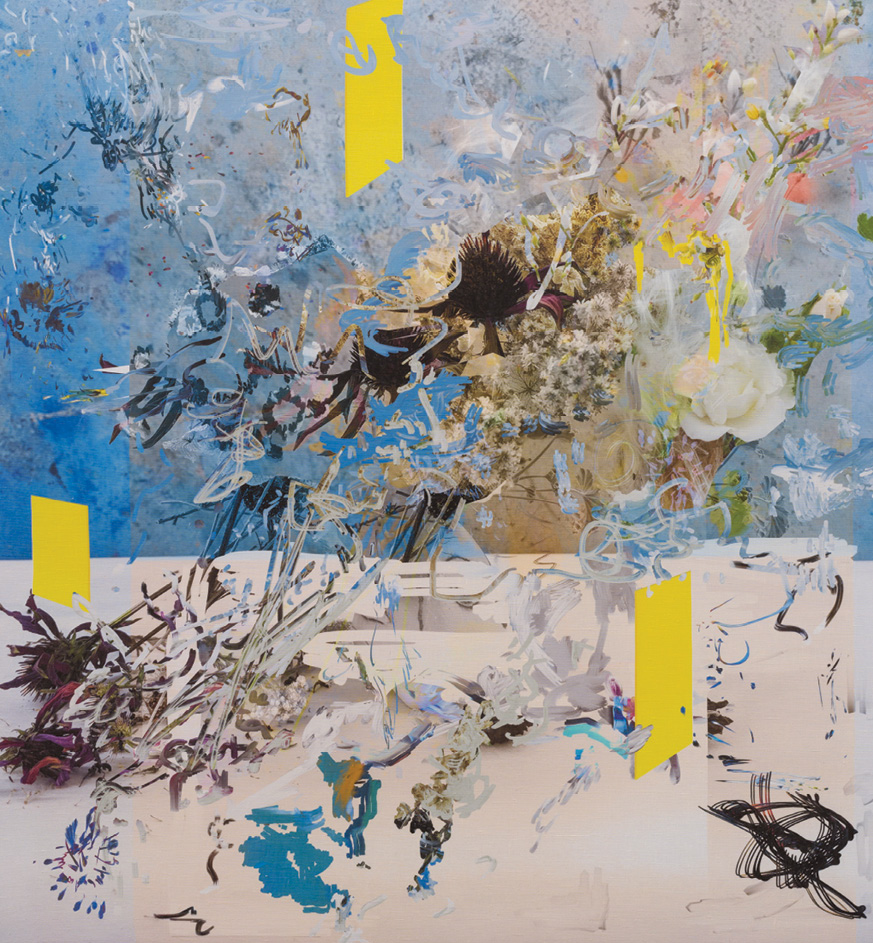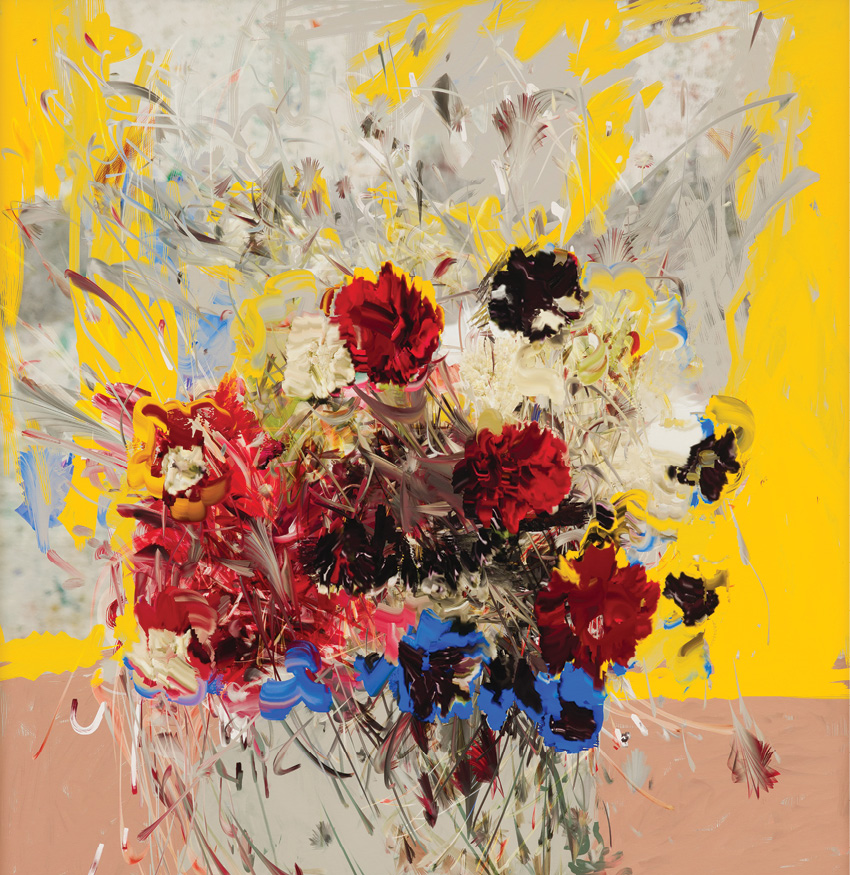It is not as simple as a pixels-for-brushstrokes exchange, but there’s no getting around how Petra Cortright’s new digital compositions are in a heated conversation with paintings. Yes, the gestures she enacts on her computer or touch-screen tablet function in the pictures like brush work in paintings, being the stuff from which the pictures are built. But paint is not what they are actually made of, and not only is Cortright not trying to get pixels to behave like paints, she’s actively encouraging the pixels to be more fully themselves.
Cortright’s choice of subject lands on the perfect place along the art history spectrum for this conversation. The dozen or so works are variations on the floral still life genre, and “Lucky Duck Lights Out,” the exhibition title, references two varieties of dahlia, the former a sunny yellow and the latter, a velvety scarlet. Notably, these are flowers growing in the artist’s own garden, and she photographs them herself for sourcing elements of the compositions, in both an allegorical and material evolution of her usual practice of internet image-mining.
Because the visual cues of Dutch still life painting are all but universal, this motif provides a constant from which to make the unavoidable pixel/pigment comparisons. We know what paintings like these, from van Huysum to van Gogh, are “supposed” to look like, and Cortright borrows heavily from those conventions in constructing the images and pictorial space. She provides low centers of gravity, the sense of an interior, and lively light sources with level table edges like horizon lines, pot-bellied vases, profusions of color-riot bouquets, and storms of fallen petals and wild stems.
In one example, IWA WRESTLING_hot+flash “IMPOSSIBLE MISSION II (2018), the table disappears, but an elegant ivory background, clay-toned vessel, and tall, ebullient arrangement of primary color blooms occupies the space with autumnal majesty. Each of Cortright’s works is printed either on aluminum, Belgian linen, rag paper, or face-mounted gloss paper, which amplifies the aura of the original object despite being produced from non-material master files. The scale and vertical orientation imparts the presence of paintings in other ways than personality of surface.
And about those surfaces, even inasmuch as these and indeed all of Cortright’s works stridently embrace post-internet idioms, they are also objects—not theory, or unspooled binary code. We are reminded of this with works like BETTY CROCKER_BioAss_chickens+roosters (2018), in which the format of the premise dissolves. The whole thing flies apart as if shot from a canon. The debris strewn in land and air are thus revealed to be digital artifacts—lines, smears, sampled photos, an armature made from a grid that looks like what you see when the VR reaches its limit.
Every image shows off its DNA in this way. None of them are tight; within a foot, each work proudly shows itself for what it is. This dissolution is akin to what happens in paintings sometimes, on closer inspection. But here, the picture plane doesn’t dissolve into pure pigment, but into a bricolage of digital mark-making. These are familiar and strange works that are, in the end, about remembering to notice what our things are made of these days.



